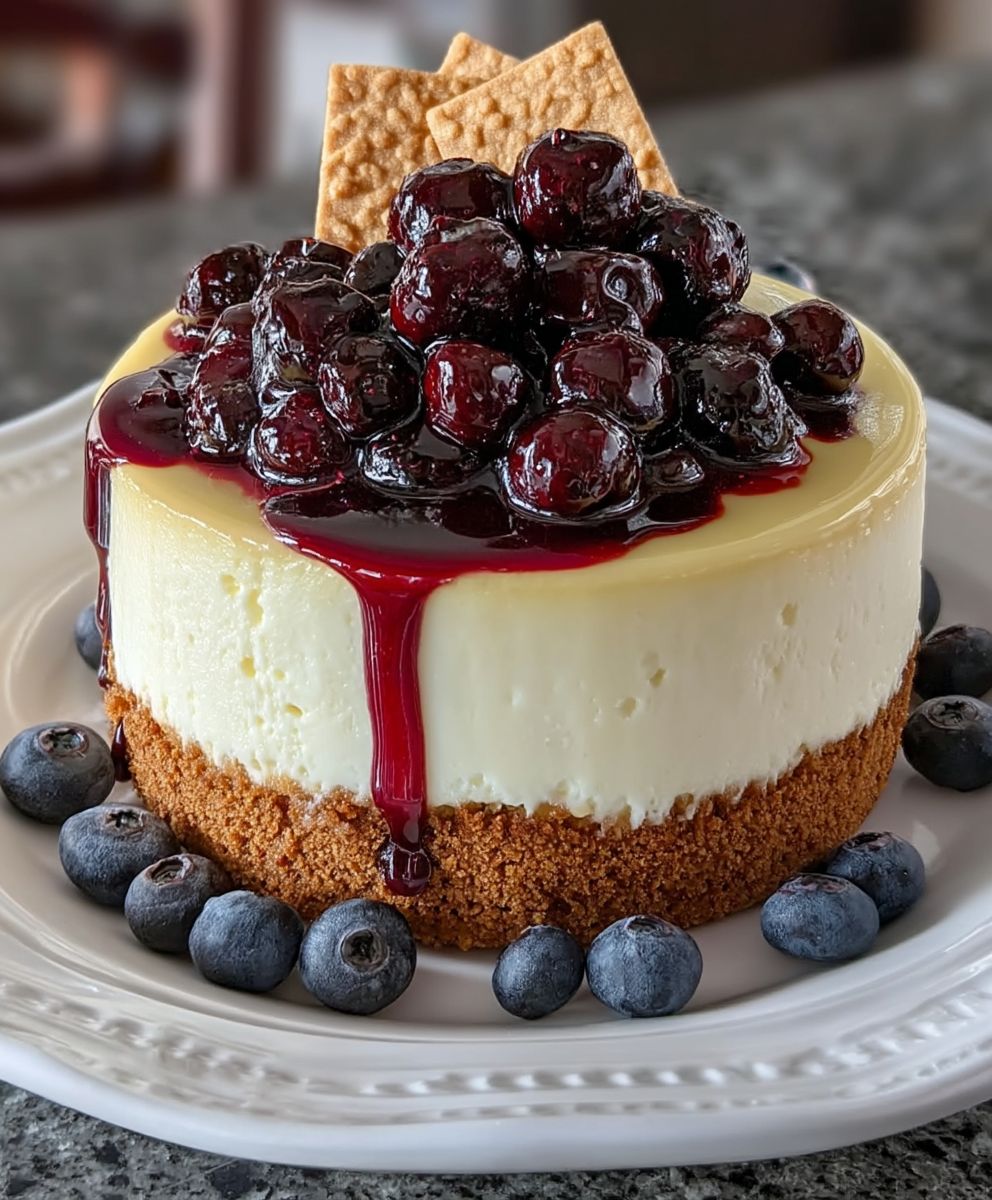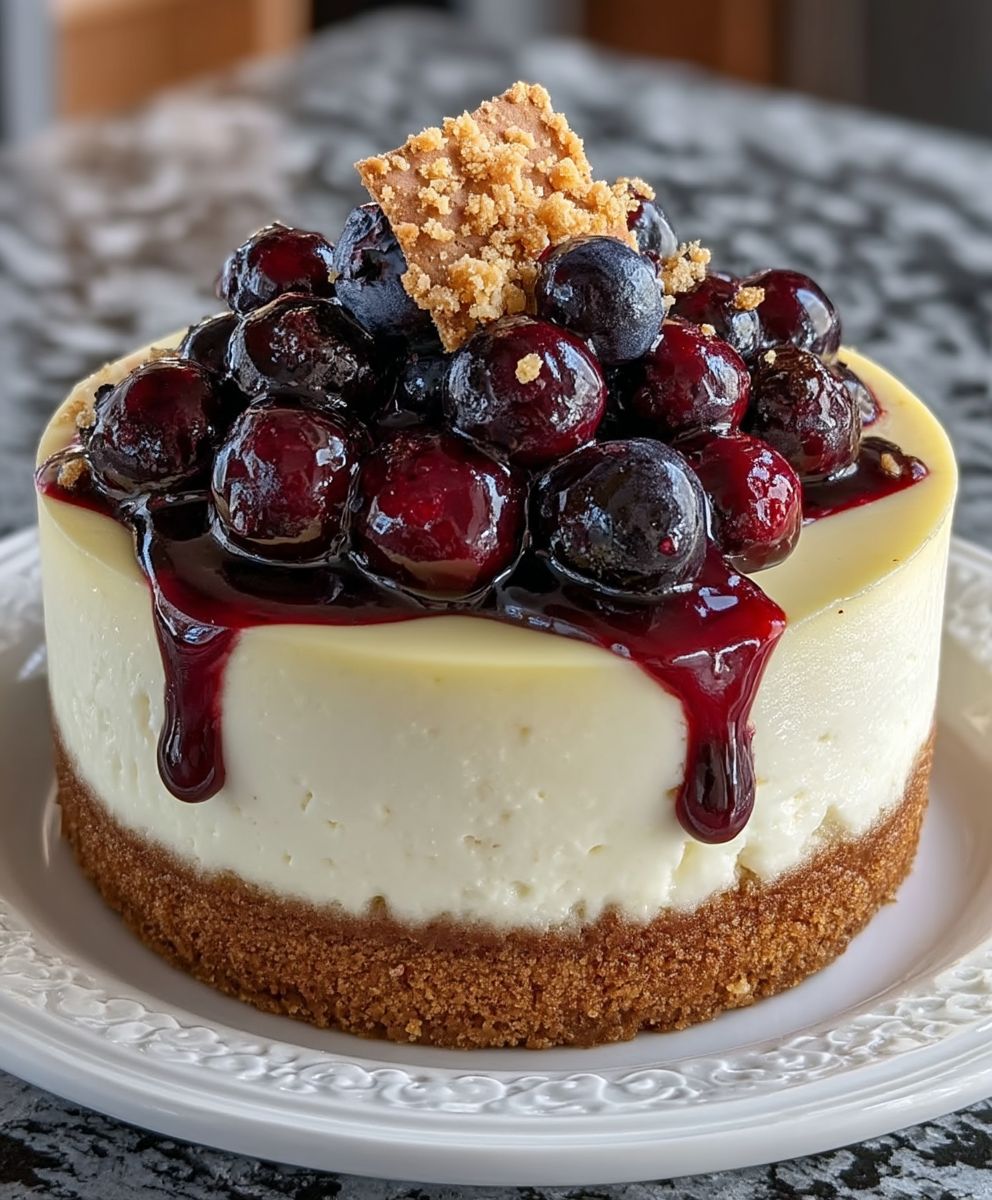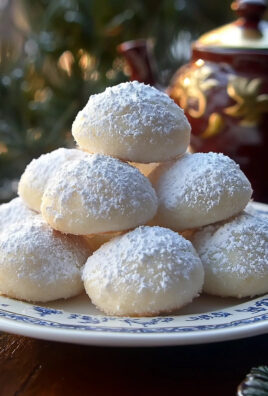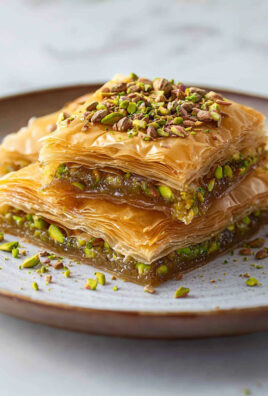Vanilla Cheesecake: just the name conjures up images of creamy, decadent perfection, doesn’t it? I’m about to share my absolute favorite recipe, one that has been passed down through my family for generations and perfected over countless holiday gatherings. Forget those dry, crumbly cheesecakes you might have encountered; this one is unbelievably smooth, rich, and bursting with vanilla flavor.
The history of cheesecake stretches back to ancient Greece, but the modern version we know and love truly took off in America. It’s become a staple dessert, gracing tables at celebrations big and small. But what is it about vanilla cheesecake that makes it so irresistible?
For me, it’s the perfect balance of textures: the crisp, buttery graham cracker crust giving way to the unbelievably smooth and creamy filling. And the taste? Oh, the taste! The subtle tang of the cream cheese is perfectly complemented by the sweet, aromatic vanilla. It’s a symphony of flavors that dance on your tongue. Plus, while it might seem intimidating, this recipe is surprisingly straightforward. With a few simple steps, you can create a show-stopping dessert that will impress your friends and family. Get ready to experience cheesecake bliss!

Ingredients:
- For the Crust:
- 1 ½ cups graham cracker crumbs (about 12 full graham crackers)
- 5 tablespoons (70g) unsalted butter, melted
- ¼ cup (50g) granulated sugar
- Pinch of salt
- For the Cheesecake Filling:
- 32 ounces (900g) cream cheese, softened to room temperature
- 1 ¾ cups (350g) granulated sugar
- 2 teaspoons pure vanilla extract
- ½ teaspoon lemon zest (optional, but highly recommended!)
- 4 large eggs, at room temperature
- ¾ cup (170g) sour cream, at room temperature
- For the Sour Cream Topping (Optional):
- 1 cup (225g) sour cream, at room temperature
- 2 tablespoons (25g) granulated sugar
- 1 teaspoon pure vanilla extract
Preparing the Graham Cracker Crust:
- Preheat your oven to 350°F (175°C). This is crucial for baking the crust properly.
- In a medium bowl, combine the graham cracker crumbs, melted butter, granulated sugar, and salt. Make sure everything is evenly distributed. I like to use a fork to break up any clumps of graham cracker crumbs and ensure the butter coats everything nicely.
- Press the mixture firmly into the bottom of a 9-inch springform pan. You can use the bottom of a measuring cup or a flat-bottomed glass to help you create an even and compact crust. Pay special attention to the edges, pressing the crumbs up the sides slightly. A well-pressed crust is essential for preventing leaks and ensuring a sturdy base for your cheesecake.
- Bake the crust for 8-10 minutes, or until lightly golden brown. Keep a close eye on it, as it can burn easily. Once baked, remove the crust from the oven and let it cool completely while you prepare the cheesecake filling. This cooling period is important because it allows the crust to firm up.
Making the Cheesecake Filling:
- Reduce the oven temperature to 325°F (160°C). This lower temperature is key to preventing cracks in your cheesecake.
- In a large bowl, beat the softened cream cheese with an electric mixer until smooth and creamy. This is probably the most important step in ensuring a smooth cheesecake. Make sure your cream cheese is truly at room temperature; otherwise, you’ll end up with lumps. Beat it for several minutes until it’s completely smooth and free of any lumps.
- Gradually add the granulated sugar, beating until well combined. Don’t add all the sugar at once; adding it gradually helps it incorporate evenly into the cream cheese. Scrape down the sides of the bowl as needed to ensure everything is mixed properly.
- Beat in the vanilla extract and lemon zest (if using). The lemon zest adds a subtle brightness that complements the vanilla beautifully.
- Add the eggs one at a time, beating well after each addition. Be careful not to overbeat the eggs, as this can incorporate too much air into the batter, which can cause the cheesecake to puff up and then crack as it cools. Just beat until each egg is fully incorporated.
- Stir in the sour cream until just combined. Again, be careful not to overmix. Overmixing can lead to a tough cheesecake.
Baking the Cheesecake:
- Pour the cheesecake filling over the cooled graham cracker crust. Smooth the top with a spatula.
- Prepare a water bath. Wrap the bottom of the springform pan tightly with heavy-duty aluminum foil. This will prevent water from seeping into the cheesecake. Place the wrapped pan inside a larger roasting pan. Pour hot water into the roasting pan until it reaches about halfway up the sides of the springform pan. The water bath helps to create a moist environment in the oven, which prevents the cheesecake from cracking.
- Bake for 70-80 minutes, or until the edges are set but the center still has a slight jiggle. The jiggle is important; it means the cheesecake is not overbaked. Overbaking is a common cause of dry, cracked cheesecakes.
- Turn off the oven and let the cheesecake cool in the oven with the door slightly ajar for 1 hour. This slow cooling process helps to prevent cracking.
- Remove the cheesecake from the water bath and let it cool completely on a wire rack.
Adding the Sour Cream Topping (Optional):
- In a small bowl, combine the sour cream, granulated sugar, and vanilla extract. Mix until smooth.
- Spread the sour cream topping evenly over the cooled cheesecake.
- Refrigerate the cheesecake for at least 4 hours, or preferably overnight, before serving. This allows the cheesecake to fully set and the flavors to meld together.
Serving and Storage:
- To serve, carefully run a thin knife around the edge of the cheesecake to loosen it from the springform pan. Release the sides of the pan and gently lift the cheesecake off the base.
- Slice and serve. I like to serve my cheesecake with fresh berries or a drizzle of chocolate sauce.
- Store leftover cheesecake in the refrigerator, covered, for up to 5 days.
Tips for a Perfect Cheesecake:
- Use room temperature ingredients: This is crucial for a smooth and creamy cheesecake. Make sure your cream cheese, eggs, and sour cream are all at room temperature before you start baking.
- Don’t overmix the batter: Overmixing can incorporate too much air into the batter, which can cause the cheesecake to puff up and then crack as it cools.
- Bake in a water bath: A water bath helps to create a moist environment in the oven, which prevents the cheesecake from cracking.
- Cool the cheesecake slowly: Cooling the cheesecake slowly helps to prevent cracking. Turn off the oven and let the cheesecake cool in the oven with the door slightly ajar for 1 hour, then let it cool completely on a wire rack before refrigerating.
- Be patient: Cheesecake needs time to chill and set properly. Resist the urge to cut into it before it’s fully chilled.
Troubleshooting:
- Cracked Cheesecake: Cracking is a common problem with cheesecakes. The most common causes are overbaking, baking at too high a temperature, or cooling the cheesecake too quickly. To prevent cracking, bake the cheesecake in a water bath, bake at a lower temperature, and cool the cheesecake slowly.
- Lumpy Cheesecake: Lumpy cheesecake is usually caused by using cold cream cheese. Make sure your cream cheese is at room temperature before you start baking.
- Soggy Crust: A soggy crust can be caused by not pressing the graham cracker crumbs firmly enough into the pan or by using too much butter. Make sure to press the crumbs firmly and use the correct amount of butter.

Conclusion:
This isn’t just another dessert; it’s an experience. This Vanilla Cheesecake recipe is a must-try because it delivers that perfect balance of creamy richness and delicate vanilla flavor that will leave you and your guests utterly delighted. It’s surprisingly simple to make, even for beginner bakers, and the results are truly impressive. Forget store-bought cheesecakes that often disappoint; this homemade version is guaranteed to be a showstopper.
But why is this recipe so special? It’s the combination of high-quality ingredients and a carefully crafted method that ensures a smooth, crack-free top and a texture that melts in your mouth. The vanilla extract we use is key don’t skimp on quality here! A good vanilla extract will infuse the entire cheesecake with its warm, inviting aroma and flavor.
And the best part? This Vanilla Cheesecake is incredibly versatile. Serve it chilled, straight from the refrigerator, for a classic and refreshing treat. Or, for a more decadent experience, try topping it with fresh berries like strawberries, raspberries, or blueberries. A drizzle of chocolate sauce or a sprinkle of toasted nuts adds another layer of flavor and texture.
Looking for variations? Consider adding a swirl of raspberry jam to the batter before baking for a beautiful and flavorful twist. Or, for a more intense vanilla flavor, use a vanilla bean paste in addition to the extract. You could even experiment with different crusts a graham cracker crust is traditional, but a chocolate cookie crust or a shortbread crust would also be delicious.
Here are a few serving suggestions to elevate your Vanilla Cheesecake experience:
* Classic Berry Topping: A simple mix of fresh berries tossed with a touch of sugar and lemon juice.
* Chocolate Ganache: A rich and decadent chocolate ganache drizzled over the top.
* Salted Caramel Sauce: The perfect balance of sweet and salty.
* Whipped Cream: A light and airy whipped cream, lightly sweetened with vanilla sugar.
* Lemon Curd: A tangy and bright lemon curd that complements the richness of the cheesecake.
I truly believe that this recipe will become a staple in your baking repertoire. It’s perfect for special occasions, holidays, or simply a weekend treat. It’s a crowd-pleaser that’s guaranteed to impress.
So, what are you waiting for? Gather your ingredients, preheat your oven, and get ready to create a truly unforgettable dessert. I’m confident that you’ll love this Vanilla Cheesecake as much as I do.
Once you’ve tried it, I’d absolutely love to hear about your experience! Did you make any variations? What toppings did you use? Share your photos and comments below I can’t wait to see your creations and hear your feedback. Happy baking! Let me know if you have any questions, and I’ll do my best to help. Enjoy!
Vanilla Cheesecake: The Ultimate Guide to Baking Perfection
Classic creamy cheesecake with a graham cracker crust, baked in a water bath for a perfectly smooth texture. Optional sour cream topping adds a tangy finish.
Ingredients
- 1 ½ cups graham cracker crumbs (about 12 full graham crackers)
- 5 tablespoons (70g) unsalted butter, melted
- ¼ cup (50g) granulated sugar
- Pinch of salt
- 32 ounces (900g) cream cheese, softened to room temperature
- 1 ¾ cups (350g) granulated sugar
- 2 teaspoons pure vanilla extract
- ½ teaspoon lemon zest (optional, but highly recommended!)
- 4 large eggs, at room temperature
- ¾ cup (170g) sour cream, at room temperature
- 1 cup (225g) sour cream, at room temperature
- 2 tablespoons (25g) granulated sugar
- 1 teaspoon pure vanilla extract
Instructions
- Prepare the Graham Cracker Crust: Preheat oven to 350°F (175°C). In a medium bowl, combine graham cracker crumbs, melted butter, granulated sugar, and salt. Press firmly into the bottom of a 9-inch springform pan, pressing up the sides slightly. Bake for 8-10 minutes, or until lightly golden brown. Let cool completely.
- Make the Cheesecake Filling: Reduce oven temperature to 325°F (160°C). In a large bowl, beat softened cream cheese with an electric mixer until smooth and creamy. Gradually add granulated sugar, beating until well combined. Beat in vanilla extract and lemon zest (if using). Add eggs one at a time, beating well after each addition. Stir in sour cream until just combined.
- Bake the Cheesecake: Pour cheesecake filling over the cooled graham cracker crust. Smooth the top. Wrap the bottom of the springform pan tightly with heavy-duty aluminum foil. Place the wrapped pan inside a larger roasting pan. Pour hot water into the roasting pan until it reaches about halfway up the sides of the springform pan. Bake for 70-80 minutes, or until the edges are set but the center still has a slight jiggle.
- Turn off the oven and let the cheesecake cool in the oven with the door slightly ajar for 1 hour. Remove the cheesecake from the water bath and let it cool completely on a wire rack.
- Add the Sour Cream Topping (Optional): In a small bowl, combine sour cream, granulated sugar, and vanilla extract. Mix until smooth. Spread the sour cream topping evenly over the cooled cheesecake.
- Chill and Serve: Refrigerate the cheesecake for at least 4 hours, or preferably overnight, before serving. Run a thin knife around the edge of the cheesecake to loosen it from the springform pan. Release the sides of the pan and gently lift the cheesecake off the base. Slice and serve.
Notes
- Use room temperature ingredients for a smooth and creamy cheesecake.
- Don’t overmix the batter.
- Bake in a water bath to prevent cracking.
- Cool the cheesecake slowly to prevent cracking.
- Be patient and chill the cheesecake thoroughly before serving.
- For a perfect crust, press the graham cracker crumbs firmly into the pan.
- If your cheesecake cracks, don’t worry! It will still taste delicious. You can cover the cracks with the sour cream topping or fresh fruit.
- If you don’t have a springform pan, you can use a regular cake pan. Line the pan with parchment paper, leaving an overhang on the sides. After the cheesecake has cooled, use the parchment paper to lift it out of the pan.




Leave a Comment